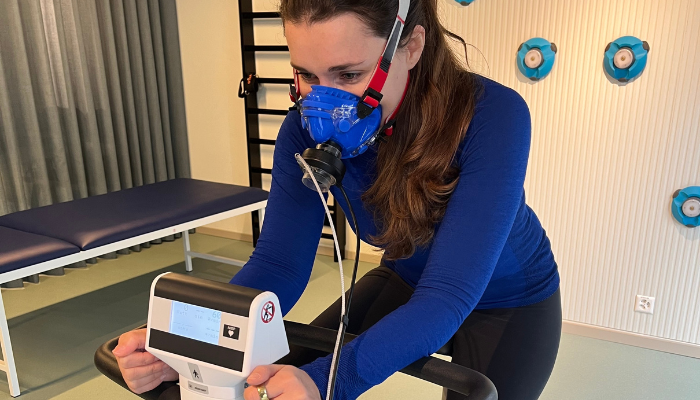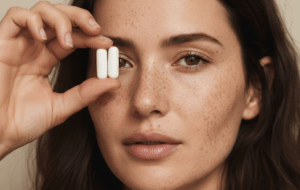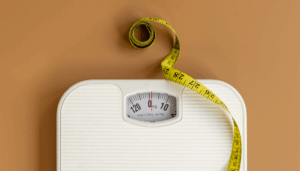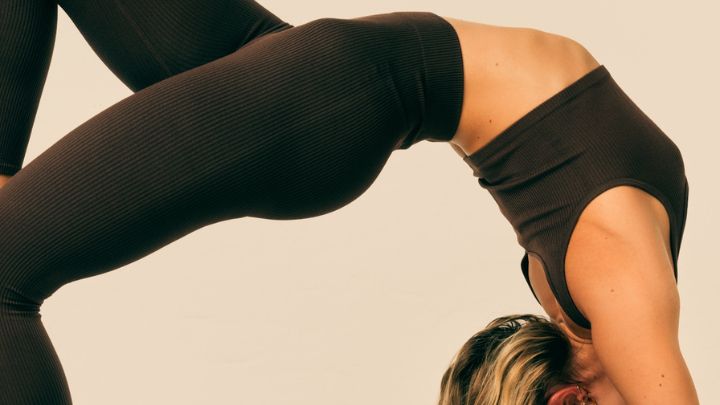VO2max—your body’s maximum oxygen utilisation capacity—is more than just a fitness metric; it’s a powerful indicator of long-term health and vitality.
Curious to see how my fitness stacks up, I recently underwent a VO2max test at Ayun, Zurich’s new walk-in longevity studio.

Performed on a stationary bicycle, my test revealed a VO2max of 40.5, placing me in the 85th percentile for women aged 35. As someone who runs casually and does strength training 1–3 times a week, I was thrilled with this result.
Manuel, the Head of Sport Science at Ayun, attributed my score to my active lifestyle, my running habits during university, and likely a touch of “good genetics.”
In this article
FREE anti-ageing guide

- Master the science of rejuvenation.
- Apply proven tips to turn back the clock.
- Transform your health with top longevity specialists.
What is VO2max, and how is it measured?
VO2max represents the maximum volume of oxygen (in millilitres) your body can use per minute per kilogram of body weight (mL/min/kg) during intense exercise. This unit accounts for individual differences in body size, making VO2max a relative measure of aerobic capacity.
The higher your VO2max, the more oxygen your body can deliver to your muscles, allowing you to sustain higher levels of physical activity. A high VO2max doesn’t just mean better athletic performance—it also correlates with greater cardiovascular health, metabolic efficiency, and reduced risk of chronic diseases.
Why VO2max is essential for longevity
VO2max measures how efficiently your body uses oxygen, reflecting the health of your lungs, heart, and muscles. A higher VO2max means better stamina, more energy, and a reduced risk of chronic diseases. However, VO2max naturally declines with age—about 10% per decade after your 20s, unless actively maintained.
Optimising your VO2max now ensures a stronger foundation for the future. As shown in the graph below, maintaining your VO2max above the average decline trajectory allows you to stay active and independent well into your 70s and 80s. Everyday activities like gardening, playing with grandchildren, or hiking up a mountain become easier when your VO2max remains in the optimal range for your age.
VO2max decline with Age in women and its impact on everyday activities
Source: https://www.ayun.ch/insights/vo2max-the-key-to-longevity-and-healthy-aging
This graph also highlights the VO2max levels required for certain activities:
- 40 mL/min/kg: Jogging 12 km in under 60 minutes.
- 29 mL/min/kg: Hiking or moderate cycling.
- 20 mL/min/kg: Gardening or brisk walks without shortness of breath.
- 13 mL/min/kg: Activities like climbing stairs can become challenging.
By contrast, a low VO2max (below 13) can severely limit daily function, making even light household tasks difficult.
What influences VO2max?
Several factors influence your VO2max:
- Age: VO2max declines naturally with age, but regular exercise can slow this decline.
- Gender: On average, men have higher VO2max values due to larger heart and lung capacities and greater muscle mass.
- Genetics: Some people are genetically predisposed to higher VO2max levels, influencing their baseline and potential for improvement.
- Fitness Level: Those who regularly engage in aerobic and strength training tend to have higher VO2max values.
- Lifestyle Habits: Smoking, poor sleep, and a sedentary lifestyle can lower VO2max, while walking, cycling, or climbing stairs can boost it.
While genetics and age are out of our control, exercise and lifestyle choices play a significant role in determining and improving VO2max.
The coach’s plan to improve my VO2max
Based on my test results, Manuel designed a personalised plan to further boost my VO2max:
- Add one Zone 2 training session per week: This involves 60–90 minutes of low-intensity cardio (e.g., cycling, running, or brisk walking) at a pace where I can still hold a conversation comfortably.
- Incorporate one HIIT (Zone 4) session per week: High-Intensity Interval Training involves short bursts of high-intensity effort (e.g., 30-second sprints) at 80–90% of your maximum heart rate (Zone 4), followed by recovery periods at lower intensity.
- Monitor my progress: Retest in three months to evaluate the impact of these changes.
Discover your perfect training zones with the VO2max test
The VO2max test is a powerful tool for determining your optimal training zones by identifying the predominant energy delivery systems during different phases of the test.
For instance, Zone 2 corresponds to the intensity just below your body’s Ventilatory Threshold 1, while Zone 4, ideal for interval training, lies just above Ventilatory Threshold 2.
While heart rate zones, expressed as a percentage of your maximum heart rate (MHR), can provide a general approximation, the VO2max test offers precise data.
It not only pinpoints these zones with accuracy but also determines your actual maximum heart rate, eliminating the need to rely on generic formulas or assumptions—important since MHR is highly individual.
With this information, you can tailor your training to hit the right intensity for your goals, whether it’s building endurance in Zone 2 or improving performance with high-intensity intervals in Zone 4.
How to improve your VO2max
Whether you’re a beginner or already active, here’s how you can improve your VO2max:
If you’re new to exercise:
- Start with light activities (e.g., walking or swimming) for 30–60 minutes, 3–4 times a week.
- Gradually increase duration and intensity as your fitness improves.
If you’re already active:
- Add HIIT sessions (Zone 4 training) to your routine for a mix of sprints and recovery intervals.
- Incorporate longer Zone 2 workouts weekly to build a stronger aerobic base.
Consistency is crucial—building VO2max is a gradual process that rewards commitment.
How Avea supplements support VO2max and recovery
While exercise is key, Avea supplements can enhance the process:
- NMN: Boosts NAD+ levels, supporting cellular energy production and recovery.
- Booster: Protects against oxidative stress, improving endurance.
- Collagen Activator: Supports recovery through reduced inflammation.
- Mobiliser: Aids joint and muscle repair, essential for consistent training.
- Essentials: Provides key micronutrients like Vitamin D3, Omega-3s, and Magnesium.
A personalised path to longevity
Learning my VO2max at Ayun has inspired me to view fitness as a cornerstone of longevity. With a tailored plan and the right support from Avea supplements, I’m excited to see how my VO2max evolves over the coming months.
To gain insights into your own health metrics, consider a VO2max test at Ayun. Their expertise and personalised guidance make this journey as empowering as it is enlightening.
Learn more about VO2max and its role in healthy ageing at Ayun’s blog post.














